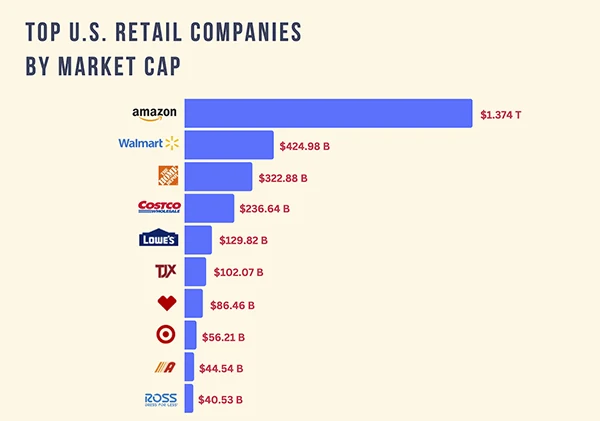Understanding and Implementing Retail Markdown Strategy in 2024
For any business, retaining every hard-earned dollar is necessary for long-term success. Especially during challenging economic periods like recessions or pandemics, companies may need to generate cash quickly. This is when retail markdowns can become necessary to sell slow-moving inventory.
Whereas it may seem concerning on the surface, with the right strategic approach, they can actually boost revenues. By carefully picking the percentages and products, retailers can turn targeted price reductions into profit generators. Also, learn about Brand Activation Strategy with this guide. Let’s take a closer look.
Defining Retail Markdowns
A markdown in retail is a strategic reduction in the originally planned pricing for a product done by the retailer. Markdowns differ from discounts in that they permanently lower the everyday shelf price rather than temporarily reduce the price at checkout.
They are commonly used on products that are not selling at the necessary velocity to spur sales momentum and liquidate inventory. The goal is to incrementally decrease prices to accelerate sell-through rates on slower-moving stock-keeping units (SKUs). Effective cutbacks require analyzing sales data to determine optimal timing and percentages that balance turnover and margin.
How Markdowns Differ from Discounts
Although they may appear similar to customers, markdowns, markups and discounts vary significantly for retailers. A discount is a temporary reduction applied at checkout, usually for bulk or promotional purchases. Such an event permanently lowers the everyday price of a product.
For example, a clothing retailer typically prices their t-shirts at $20 each. As summer ends, they implement a 25% cut on their short-sleeve t-shirt inventory to lower the shelf price to $15 per shirt. This discount permanently reduces the everyday price from $20 to $15 until the marked-down items sell out.
Separately, the retailer runs a 10% off promotion for loyalty members at checkout storewide. When a customer who is a loyalty member goes to purchase one of the marked-down short-sleeve t-shirts for $15, they will get an extra 10% off at checkout, reducing the final purchase price to $13.50.
However, regular-priced t-shirts that did not receive a markdown would simply get the 10% checkout discount from $20 to $18. The discount and loyalty discounts are applied separately.
This example shows how a cut permanently changes the shelf price, whereas a discount temporarily reduces the price at checkout only. The two can be used together to maximize promotions.

These are some top US retail companies by market capital
The Power of a Strategic Markdown Approach
Implementing a considered strategy directly impacts sales velocity and inventory liquidation. Without one, retailers risk overstocked shelves, falling sales, and reduced purchasing power for new inventory. Excess idle stock prevents bringing in new products to reignite sales.
In addition to clearing stagnant inventory, strategic markdowns attract more customers to stores. This creates opportunities to sell more items to these deal-seeking shoppers. Customers may come for the discounts but then purchase other full-price merchandise.
10 Steps to Build an Effective Markdown Strategy
Crafting an impactful strategy takes research, analysis, and testing. The steps below outline key considerations for optimizing cutbacks to drive sales and turnover.
- Closely monitor sales data like week-to-week and month-to-month trends to identify slowing momentum.
- Implement discounts by product group rather than across the entire store to avoid unnecessary profit erosion.
- Initiate markdowns with a small percentage reduction to test impact before going deeper.
- Allow sufficient time before assessing the results, as seasonal factors can affect sales cycles.
- Tailor strategy and timing based on product life cycles – fast fashion vs. longer cycles like electronics.
- Use these cutbacks to supplement pricing strategy, not as the primary sales approach. Maintain price integrity.
- Localize them by location for national retailers to match local demand.
- Time your strategy around major retail events like holidays for amplified impact.
- Display offers prominently in-store through signage and POP marketing to draw attention.
- Learn from their performance to refine initial pricing and future tactics.
By closely following these steps, retailers can develop an effective, strategic markdown program tailored to their business needs and inventory situations. Continual optimization will ensure maximum impact.
Avoiding Failed Markdowns
Poorly planned, managed, and analyzed markdowns often fail to deliver results. Knee-jerk deep discounts without strategy backfire. Instead, incorporate thoughtful timing into annual plans when maintaining the agility to adapt.
When designing store layouts, incorporate special placement. Link marked-down products to full-price merchandise to encourage incremental sales, not just cherry-picking deals.
Do not over-rely on discounts rather than refine data-driven pricing strategies. Protect profitability through smarter initial pricing based on historical trends and customer analytics.

Maximizing the Power of Markdowns
When executed strategically based on sales trajectories and product demand, retail markdowns can powerfully impact conversion rates and inventory turns. The key is timing markdowns on the right items at the optimal cadence.
For example, markdowns on seasonal merchandise can be timed around changing weather patterns to accelerate sell-through. Fast-fashion apparel may be marked down more frequently to stay on trend.
Its displays and promotions should generate urgency and excitement without conditioning customers to just wait for deals. This maintains perceived value when providing deals to drive traffic and turnover.
In summary, combined with strong foundational pricing, strategic deals can significantly boost revenues without diluting brand perception. When informed by data analytics, they become another lever to keep inventory fresh, customers engaged, and sales growing profitably.
